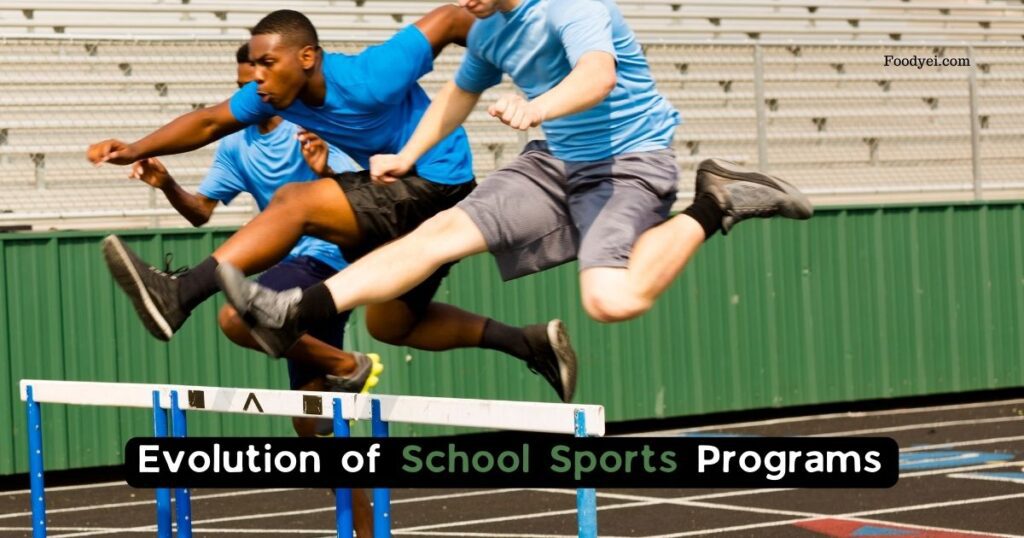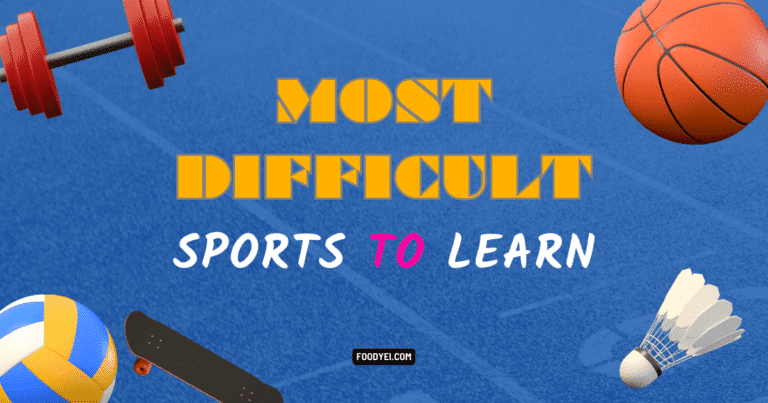Youth sports face evolving challenges from tech disruption to cost barriers. Still, the benefits of sports for kids’ development remain timeless. This blog explores trends poised to shape youth athletics and provides guidance for encouraging healthy, balanced competition.
Leveraging Technology to Enhance Access
Advances in technology will aim to reduce barriers to entry and level the playing field for youth sports participation:
Easy-to-use mobile apps can handle tasks like registering for programs, scheduling games and practices, and streamlining communication between coaches, players, and parents. This simplifies sports logistics.
Online video instructional content allows young athletes to learn proper techniques and develop skills through self-guided training. Drills and coaching are accessible from anywhere.
AI-driven performance analysis tools can provide personalized insights into a young athlete’s strengths, weaknesses, and development areas from game footage. Algorithmic assessment replaces manual review.
Simulated reality technologies like augmented and virtual reality allow individuals to practice from home through immersive drills and simulated competitions. Practice is possible without others.
Live streaming and on-demand highlights build exposure and community engagement with youth sports. Young stars can gain followers, motivation, and skills from viewing elite levels.
Democratizing access to quality instruction, competition, feedback and inspiration online ensures geography and resources do not limit sports opportunities.
Data and Analytics Informing Development
Detailed data tracking aimed at optimizing youth athletic development and progression is expanding:

Wearable devices can track biomarkers of performance like speed, vertical leap, change of direction, workload capacity, and muscle exertion. Data identifies developmental priorities.
Advanced on-field and on-court analytics generate deeper statistics measuring skills, decision-making, trends, and performance in game situations. Analytics reveal true abilities.
Predictive modeling based on growth metrics and trajectories for different ages and stages maps out an optimized, personalized progression plan for each young athlete based on their data.
Workload monitoring examines ratios between training, competition, and rest to minimize injury risk from overuse during developmental years. Managing burnout factors.
Youth athletes can be evaluated through an analytical, individualized lens to prescribe the right training for the right stage of growth.
Balancing Multi-Sport Participation
Sports diversification at a young age will be encouraged to develop athleticism:
Early specialization into one sport year-round will be discouraged to reduce burnout, fatigue, and injury risk from overuse during developmental ages.
Rotating through varied sports like soccer, basketball, tennis, swimming, and gymnastics before adolescence builds fundamental athletic literacy through diverse motor skills.
Cross-training through complementary multi-sport participation improves agility, coordination, speed, spatial awareness, endurance, and full-body functional strength.
Sampling different interests allows young athletes to discover natural fits before competitively specializing based on passion rather than parental desire.
Following children’s enjoyment and multidimensional athletic preferences is advocated over parents imposing their own sports goals.
Trying many sports develops athletic versatility and passion while identifying optimal sports specialties later on.
Improving the Spectator Experience
The youth sports viewing experience for families and fans will evolve to become more interactive and engaging:

Enhanced live streaming incorporates integrated real-time stats overlays, social media integration, camera angle options, and video highlights for digital viewers.
Festivals surrounding competitions incorporate family-friendly entertainment, music, contests, and opportunities to meet players. Events become about more than just the game.
Relaxed rules around cheering and supportive fan participation look to boost crowd energy and involvement. Allowing parents to experience events with players.
Interactive fan engagement contests via venue apps encourage attendees to predict outcomes, vote on challenges, and provide trivia for prizes. Fans get involved in the action.
Upgraded venues consider amenities, seat comfort, viewing sightlines, replays, and experiences beyond just the match itself to enhance the spectator experience.
Efforts to make attending youth sports just as fun as playing aim to build family engagement and turn fans into supporters for life.
Mitigating Socioeconomic Barriers to Participation
Sports programming aims to increase access and diversity through cost-mitigation initiatives:
Financial assistance scholarships help subsidize registration, equipment, and travel fees to enable low-income families to enroll their kids.
Free equipment donation or rental programs ensure all young athletes have proper gear for participation through partnerships with brands, retailers, and non-profits.
Intentional outreach programs in underserved communities provide access to sports introductions and developmental clinics outside mainstream channels.
Partnerships with parks & recreation centers allow sharing of resources like space, equipment, and staff to lower program overhead and provide affordable options.
Grassroots community-led sports, pickup games at local courts and parks, and street play open alternative doors for entry outside formally organized leagues.
Removing financial barriers that prevent access enables wider socioeconomic representation in youth sports.
Protecting Against Early Over-commitment
Educational guidance will encourage age-appropriate training levels to avoid burnout:

Guidelines recommend caps on weekly and yearly time commitments for competitive participation and specialization based on age and developmental stage.
Mandatory certifications for youth coaches cover guidance on injury prevention through rest and recovery, proper skill development pacing, and avoiding overtraining.
Providing alternatives like local community-based leagues with multi-sport options rather than isolated intense year-round club teams.
Delaying ranking athletes nationally, all-star teams, and elite competition to first build intrinsic motivation and love for the sport through fun peer play.
Considering physical, mental, and emotional development needs when designing programs to allow participation to remain fulfilling.
Setting realistic expectations by age allows young athletes to enjoy sports for the long term rather than dropping out due to burnout.
Prioritizing Fun and Fulfillment
Programs will reinforce positive progress and experiences to nurture student-athlete well-being:
Praise and rewards go toward effort, teamwork, character, and growth indicators rather than just measurable outcomes like scoring or rankings.
Feedback and analysis focus on intra-athlete comparison and growth over time rather than spotlighting inter-athlete comparison and rankings.
Exploration of passions and personal identity are encouraged to find the right sports fit aligned with each child’s interests and goals.
Balance is promoted between sports, family, social lives, and academics to develop the whole child beyond just athletics.
Well-being metrics like enjoyment, resilience, socialization, and holistic development will redefine success in youth sports beyond championships and scholarships.
Evolution of School Sports Programs
School-based competitive athletics must continue adapting as academic models evolve:

Potential adoption of currently niche sports on the rise culturally like esports, rugby, field hockey, and climbing to engage diverse interests.
Co-ed participation opportunities will increase in response to Title IX benefits of sports for young women while accommodating shrinking roster sizes.
Programming will adjust to shifts in classroom environments like year-round schedules, online learning periods, and alternative school models.
Formats will accommodate more mobile, short-term participation by offering clinics, camps, and drop-in sessions rather than only season-long commitments.
Ultimately, modernizing school sports aims to maintain the relevance of lifetime developmental benefits as student needs and demographics change.
Conclusion
Technology, analytics, accessibility, and cultural philosophies toward early competition will shape youth sports. But the core developmental value remains unchanged. Done right, sports teach teamwork, resilience, work ethic, social skills, confidence, and fulfillment. Ensuring participation stays fun, fair, and fulfilling will allow youth sports to keep positively impacting lives for generations to come.
FAQs
How can parents best nurture athletic ability in their children?
Encourage active play daily. Provide a range of sports opportunities. Focus praise on effort over results. Model good sportsmanship. Allow kids to choose sports that excite them. Facilitate without forcing.
What are early signs of burnout or withdrawal that indicate a child should take a break from competitive sports?
Loss of enthusiasm, avoiding practice, physical fatigue, irritability, struggling academically, lack of joy after wins, self-criticism, and social isolation suggest burnout may be developing.
How big of a role should dreams of athletic scholarships, trophies, and fame play in motivating young athletes?
Those external goals carry risks of disenchantment. Youngsters play best when intrinsically motivated by the joy of participation. Pursuing approval or status can lead to burnout. Moderation is key.
What lessons from youth sports best translate into adult life, even for those not pursuing competitive athletics?
Work ethic, resilience, teamwork, preparation, time management, leadership, confidence, dealing with success and failure, self-discipline, focus, and maintaining composure all build character on and off the field.
How can coaches, parents, and administrators cultivate inclusive, welcoming youth sports environments?
Model respect. Establish clear anti-bullying policies. Intervene against teasing. Promote perseverance and positivity. Cheer for teammates. Stress personal growth over results.
What role should youth sports play in teaching life lessons compared to letting kids just have fun?
Striking the right balance is key. Some life lessons emerge naturally but forcing character themes excessively can backfire by fueling burnout. Keeping it joyful with subtle guidance works best.




